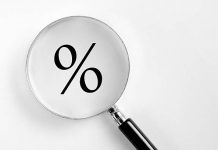Markets
Yesterday’s dynamic trading session, especially on US bond markets, was in stark contrast with today’s. The US yield curve bear flattens marginally with changes ranging from +1.4 bps (2y) to +0.3 bps (10y) with most of the “move” occurring following a strong ADP jobs report. Employment rose with 807k in December vs the 410k consensus. It’s the second strongest increase of 2021. The bulk was situated in the services sector (+669k) with all sectors posting job gains. Leisure & hospitality doesn’t feel the impact of Omicron and (voluntary) social distancing (yet?) and add 246k more jobs. Trade, transportation & utilities and professional and business services come in at a second (138k) and third (130k) place. German yields rose in sympathy but only temporarily. The curve flattens with yields down 1.4 bps at the ultralong end, unaffected by ECB Governing Council Kazaks saying no one should doubt that the central will raise rates or cut support if the inflation outlook strengthens further. The hawkish camp within the ECB is still a minority but becomes ever more vocal. Previously, Dutch member Knot said net bond-buying could be wound down by year-end to raise rates early in 2023. Belgian board member Wunsch earlier said the inflation projections show the ECB is “essentially at target”. Peripheral 10y bond yield spreads vs Germany show resilience. Spain and Portugal outperform (-3 bps), Greece lags (+3 bps) peers. Italy (-2bps) successfully launched a new benchmark 30y bond, selling €7bn at BTPS+6 vs guidance of BTPS+8. Books amounted above €55bn.
In FX space, the dollar inches lower vs most majors though moves remain contained. The trade-weighted DXY is testing the 96 big figure, down from 96.3 at the open. EUR/USD is headed north, going from 1.128 to 1.1335 at the time of writing. USD/JPY eases sub 116 after closing north of that level for the first time since 2017. The Norwegian krone is one of the better performers, attacking EUR/NOK 10 again. Rising oil prices (see headline below) are a boon to the commodity currency. Sterling retreats somewhat after steaming through to a new recovery high at EUR/GBP 0.834. The currency pair is filling bids in the 0.836 area. The zloty underperforms peers in the CE area during NBP’s Glapinski press conference on yesterday’s rate hike. He said the central bank still has room to raise rates but won’t “quell CPI at any price”. He also said some members didn’t want more hikes. EUR/PLN advances a tad to 4.57.
News Headlines
The Turkish central bank is ‘guiding’ banks and investors not to park money in dollars in order to avoid further pressure on the lira, Bloomberg reported. According to ‘sources’ the CBRT asked lenders to report big amounts of USD purchases that might impact the lira negatively. The CBRT is also said to prefer corporates to hedge against lira losses via the futures markets or via the CB’s non-delivered forward market. The report wasn’t confirmed by the CBRT. It comes after recent central bank data showed that Turkish investors still keep a record amount of foreign currency deposits late December despite measures put in place to protect local TRY deposit holders from a potential further decline of the lira. The lira today weakens slightly to trade at EUR/TRY 15.31
According to the Central Statistics Office of Hungary (KSH), the employment rate in November declined from 3.9% to 3.7%. Markets expected a more modest decline. In this respect, the unemployment rate declined back toward the levels that were in place at the onset of the corona crisis early 2020. On a monthly basis, 9400 fewer people were unemployed compared to October and 10.200 less than in November 2020. The further decline in the employment rate indicates a further tightening of labour market conditions and also suggests that domestic factors might become a more important factor for Hungarian inflation as the MNB takes a more aggressive anti-inflationary approach. The forint continues to perform well at the start of 2022. EUR/HUF currently trades near 361.75.













